Related Research Articles

Paisley or paisley pattern is an ornamental textile design using the boteh or buta, a teardrop-shaped motif with a curved upper end. Of Persian origin, paisley designs became popular in the West in the 18th and 19th centuries, following imports of post–Mughal Empire versions of the design from India, especially in the form of Kashmir shawls, and were then replicated locally.

Muslin is a cotton fabric of plain weave. It is made in a wide range of weights from delicate sheers to coarse sheeting. It gets its name from the city of Mosul, in Iraq, where it was first manufactured. In the 17th and 18th centuries Dacca in Bengal was regarded as producing the finest muslins.

Cashmere wool, simply known as cashmere, is a fiber obtained from cashmere goats, pashmina goats, and some other breeds of goat. It has been used to make yarn, textiles and clothing for hundreds of years. Cashmere is closely associated with the Kashmir shawl, the word "cashmere" deriving from an anglicisation of Kashmir, when the Kashmir shawl reached Europe in the 19th century. Both the soft undercoat and the guard hairs may be used; the softer hair is reserved for textiles, while the coarse guard hair is used for brushes and other non-apparel purposes. Cashmere, depending on the length of the fibers, can be extremely soft and breathable. High-quality cashmere will feel thick and densely woven. When pulled, it will bounce back and not lose its shape. Cashmere can come in either 1-ply or 2-ply. 1-ply cashmere is more prone to holes due to the fibers being thinner as opposed to 2-ply cashmere.

A chādor, also variously spelled in English as chadah, chad(d)ar, chader, chud(d)ah, chadur, and naturalized as, is an outer garment or open cloak worn by many women in Iran, Iraq, and some other countries under the Persianate cultural sphere, as well as predominantly Shia areas in public spaces or outdoors. A chador is a full-body-length semicircle of fabric that is open down the front. The garment is pulled over the head and is held closed at the front by the wearer; the chador has no hand openings, buttons or clasps. It may also be held closed by being tucked under the wearer's arms. The word in Classical Persian could be used in reference to almost any cloth, headscarf, or even tents. This definition is mostly retained in eastern dialects of Persian which commonly use chādar in reference to almost any cloth or scarf, including loosely worn scarves that would be inappropriate to call a chador in Iranian Persian.

Dyeing is the application of dyes or pigments on textile materials such as fibers, yarns, and fabrics with the goal of achieving color with desired color fastness. Dyeing is normally done in a special solution containing dyes and particular chemical material. Dye molecules are fixed to the fiber by absorption, diffusion, or bonding with temperature and time being key controlling factors. The bond between dye molecule and fiber may be strong or weak, depending on the dye used. Dyeing and printing are different applications; in printing, color is applied to a localized area with desired patterns. In dyeing, it is applied to the entire textile.
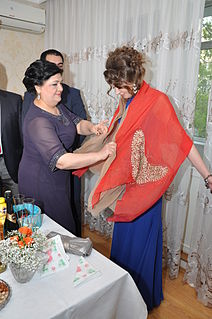
A shawl is an Indian simple item of clothing, loosely worn over the shoulders, upper body and arms, and sometimes also over the head. It is usually a rectangular or square piece of cloth, which is often folded to make a triangle, but can also be triangular in shape. Other shapes include oblong shawls.

Khadi, derived from khaddar, is a hand-spun and woven natural fibre cloth promoted by Mahatma Gandhi as swadeshi (self-sufficiency) for the freedom struggle of the Indian subcontinent, 'Khadi' term is used throughout India, Pakistan and Bangladesh. The first piece of the hand-woven cloth was manufactured in the Sabarmati Ashram during 1917-18. The coarseness of the cloth led Gandhi to call it 'khadi'. The cloth is usually hand spun and woven from cotton. However, it may also include silk or wool, which are all spun into yarn on a spinning wheel called a charkha. It is a versatile fabric, cool in summer and warm in winter. In order to improve its looks, khādī/khaddar is sometimes starched to give it a stiffer feel. It is widely accepted in various fashion circles. Popular dresses are made using khadi cloth such as dhoti, kurta, and handloom sarees such as Puttapaka Saree, Kotpad Handloom fabrics, Chamba Rumal, Tussar silk etc. Gajam Anjaiah, an Indian master handloom designer and a recipient of the Padma Shri, is known for his innovation and development of tie-dye handloom products along with the Telia Rumal technique of weaving products based on the Ikat process.
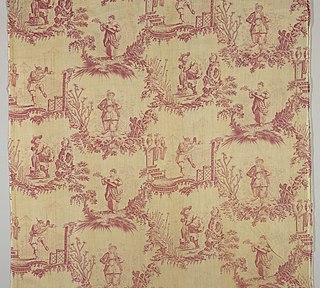
Percale is a closely woven plain-weave fabric often used for bed covers. Percale has a thread count of about 200 or higher and is noticeably tighter than the standard type of weave used for bedsheets. It has medium weight, is firm and smooth with no gloss, and warps and washes very well. It is made from both carded and combed yarns, and may be woven of various fibers, such as cotton, polyester, or various blends.
Longcloth refers to a plain cotton cloth originally made in comparatively long pieces.
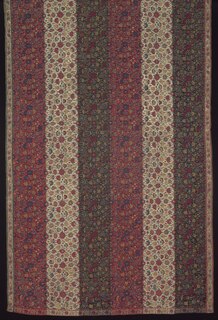
Jamawar, or grown piece, is a special type of shawl made in Kashmir."Jama" means robe and "war/var" is chest and metaphorically body. The best quality of Jamawar is built with Pashmina. The brocaded parts are woven in similar threads of silk or polyester. Most of the designs seen today are floral, with the kairy as the predominant motif. Historically handmade items, some shawls took a couple of decades to complete; consequently, original Jamawar shawls are highly valued. Modern, machine-made Jamawar prints, produced in cities such as Kashmir and other parts of Himachal Pradesh cost less to buy but handmade Jamawar are very expensive.

Broadcloth is a dense, plain woven cloth, historically made of wool. The defining characteristic of broadcloth is not its finished width but the fact that it was woven much wider and then heavily milled in order to shrink it to the required width. The effect of the milling process is to draw the yarns much closer together than could be achieved in the loom and allow the individual fibres of the wool to bind together in a felting process, which results in a dense, blind face cloth with a stiff drape which is highly weather-resistant, hard wearing and capable of taking a cut edge without the need for being hemmed.
Among arts and crafts that come out of Himachal Pradesh state in India are carpets, leather works, shawls, metalware, woodwork and paintings. Pashmina shawl is the product which is highly in demand not only in Himachal but all over the country. Colourful Himachali caps are also famous art work of the people. One tribe, Dom, is expert in manufacturing bamboo items like boxes, sofas, chairs, baskets and racks. Metalware of the state include utensils, ritualistic vessels, idols, gold and silver jewelleries.

The Kashmir shawl, the predecessor of the contemporary cashmere shawl, is a type of shawl identified by its distinctive Kashmiri weave, and for being made of fine shahtoosh or pashmina wool. Contemporary variants include the pashmina and shahtoosh shawls. In the late 20th century, they evolved to middle-class popularity through generic cashmere products, and raffal, shawls woven in the Kashmiri style, but using thicker Merino wool. Originally designed as a covering for men in India, it has evolved in the popular cultures of India, Europe, and the United States as indicators of nobility and rank, heirlooms giving on a girl's coming-of-age and marriage, and subsequently, as artistic elements in interior design.

Khes is a thin cotton blanket cloth of the Indian subcontinent; it is a damask cloth used for blankets and winter wraps. Khes is generally hand-woven with coarse cotton yarns. Khes as a garment is a simple clothing item to wear loosely to cover upper body parts by men in Pakistan and northwest India. Khes is an important cloth of Punjab region, a region which is famous for its production and historically has been known for not only the production of Khes but also many other coarse cotton textiles, especially in the 19th and 20th centuries. Khes is a comfort object used in bedding, and also usable as a cover.
Sussi or susi was a term for multicolored striped or checked cloth produced in the Indian subcontinent. Sussi was thin handloom fabric made of cotton, silk, or a blend of the two, with colored warp stripes. Punjab region was known for its production and exports during the Mughal period. Sussi was most often made with red and blue, blue and white, or green and white stripes, but other patterns were also produced. The fabric was exported to England, where sousaes were in great demand in the 18th century.

Piece goods were the textile materials sold in cut pieces as per the buyer's specification. The piece goods were either cut from a fabric roll or produced with a certain length, also called yard goods. Various textiles such as cotton, wool, silk, etc., were traded in terms of piece goods. The prices were determined as per the fabric quality.
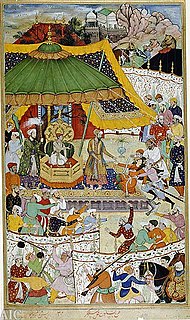
Mughal karkhanas were the manufacturing houses and workshops for craftsmen, established by the Mughals in their empire. Karkhana is a Hindustani language word that means factory. These karkhanas were small manufacturing units for various arts and crafts as well as for the emperor's household and military needs. karkhanas were named and classified based on the nature of the job. For example, 'Rangkhana' and 'Chhapakhana' were for textile dyeing and printing work. The term 'tushak-khana' was used to describe workshops that made shawls and embellished them with embroidery or needlework. Imperial or Royal Karkhanas were for luxury goods and weapons. The karkhanas were the place for various production activities and also for the exploration of new techniques and innovations. Some operations such as weaving, embroidery work, and brocade work were often done under one roof, resembling an integrated assembly line.
Lahori chaddar was the plain shawls made with soft goat hairs Kabuli Pashm. Pashm (پشم) means wool. The name itself suggests the chaddar(sheets) made in Lahore. It was one of the woolen products of Punjab in the early 19th century.
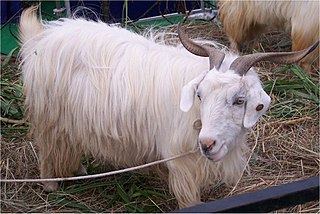
Turfani pashm or Kuchari Pashm or Turfani wool is a type of shawl wool obtained from Tibetan goats. It was imported to India from Yarkant and Changtang. The wool was considered valuable for certain shawls.

Cape Wool is any wool that originates from the Republic of South Africa; it is the generic name for South African wool. It has a white color with silky and fine staple, but wool hairs are shorter in length with less elasticity and stained also. Cape snow-white was the British way of describing Cape wool when it was imported to England in the 18th century.
References
- 1 2 3 MATHEWS, KOLANJIKOMBIL (2017). Encyclopaedic Dictionary of Textile Terms: Four Volume Set. Woodhead Publishing India PVT. Limited. p. 1171. ISBN 978-93-85059-66-7.
- ↑ Watson, John Forbes (1873). A Classified and Descriptive Catalogue of the Indian Department. W.H. Allen. p. 130.
- ↑ "English Translation of "चादर" | Collins Hindi-English Dictionary". www.collinsdictionary.com. Retrieved 2021-05-04.
- 1 2 Watt, Sir George (1987). Indian Art at Delhi 1903: Being the Official Catalogue of the Delhi Exhibition 1902-1903. Motilal Banarsidass Publ. pp. 341, 351. ISBN 978-81-208-0278-0.
- ↑ Wingate, Isabel Barnum (1979). Fairchild's dictionary of textiles. Internet Archive. New York : Fairchild Publications. p. 492. ISBN 978-0-87005-198-2.
- ↑ Gazetteer of the Amritsar District, 1892-93. Revenue Department. 1991. p. 111.